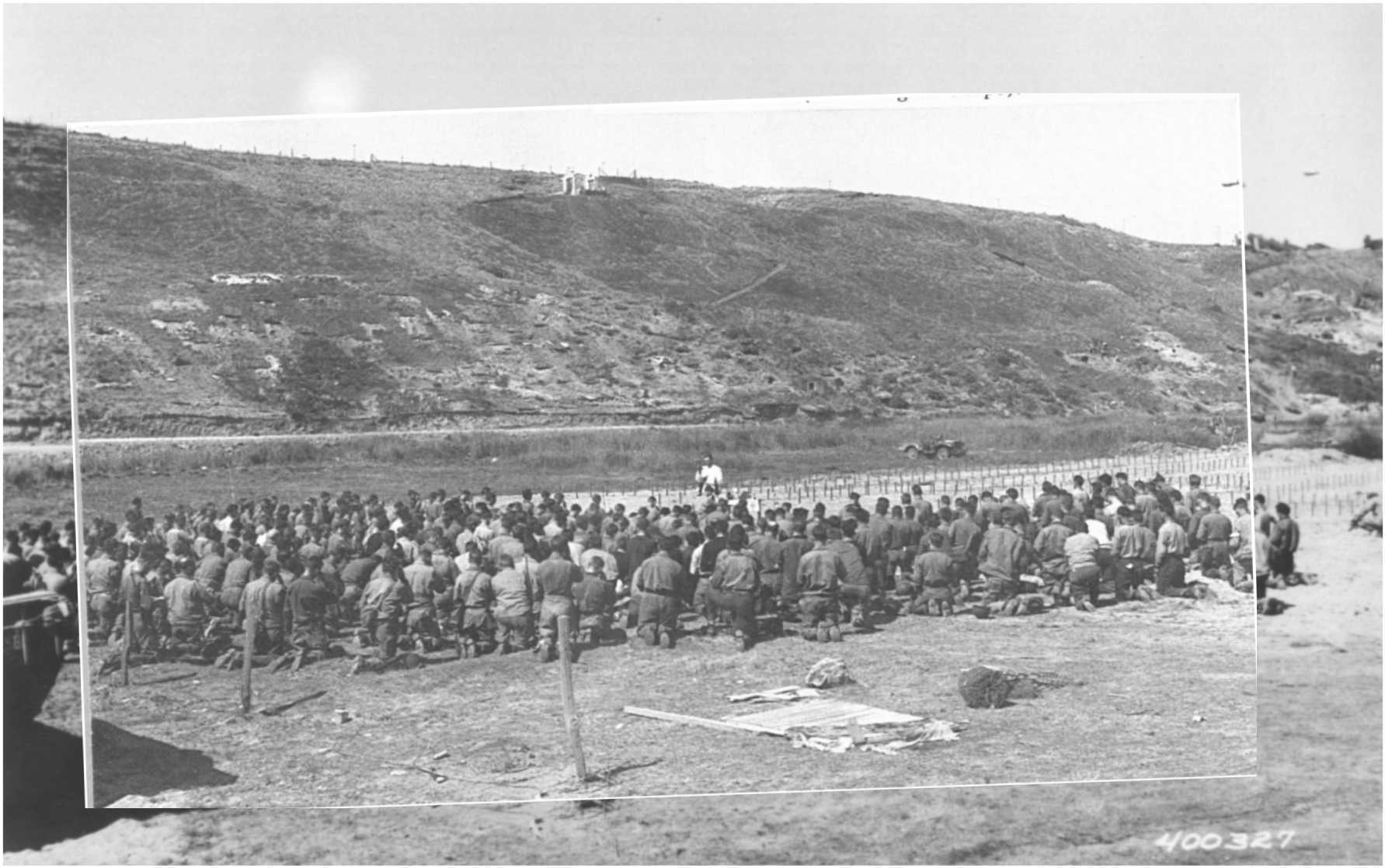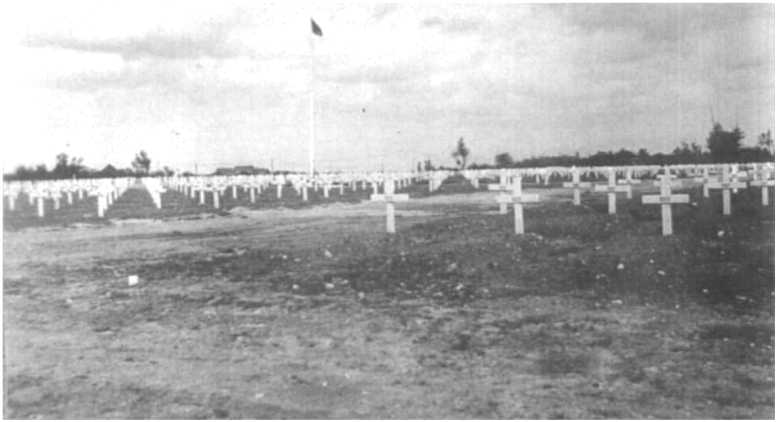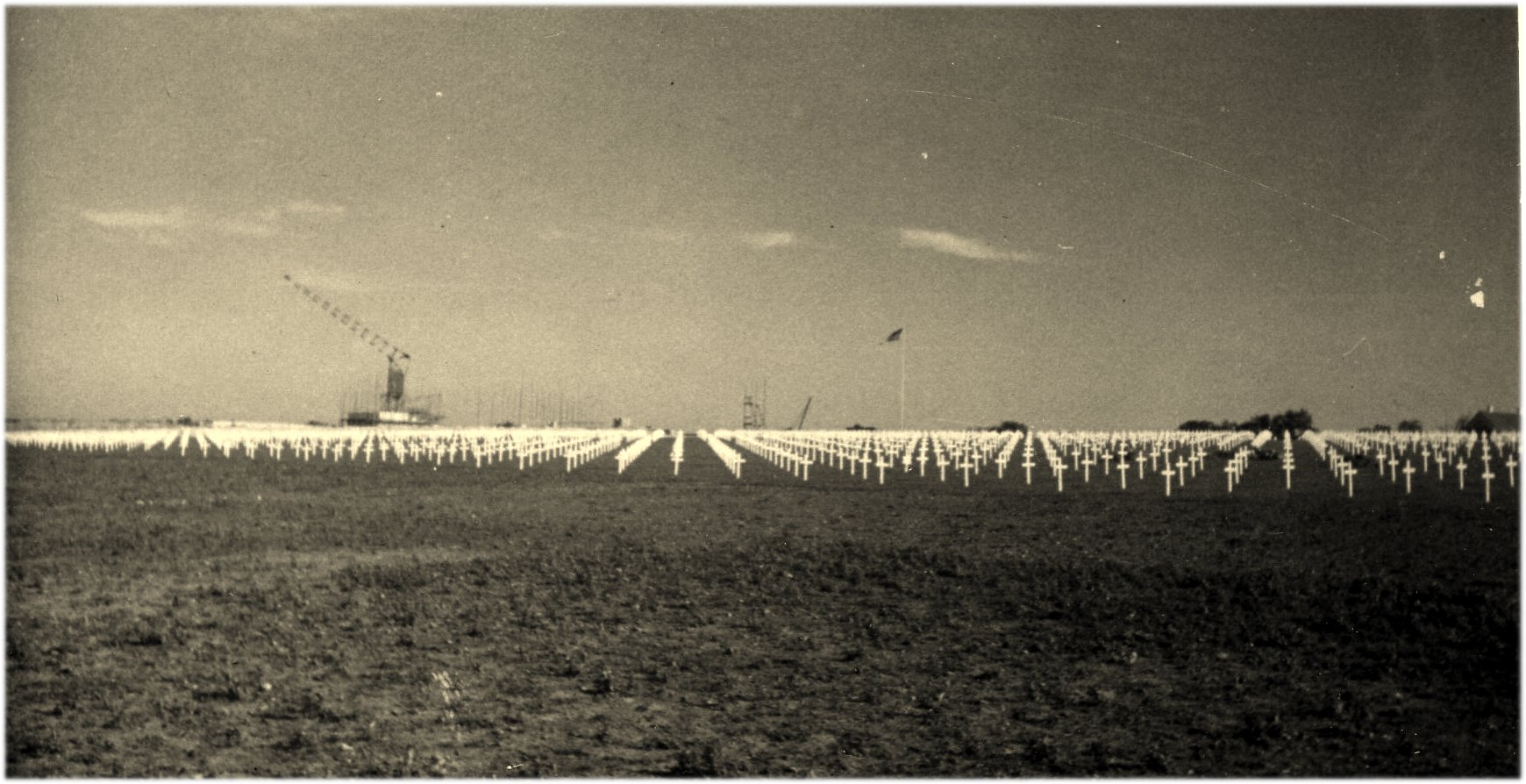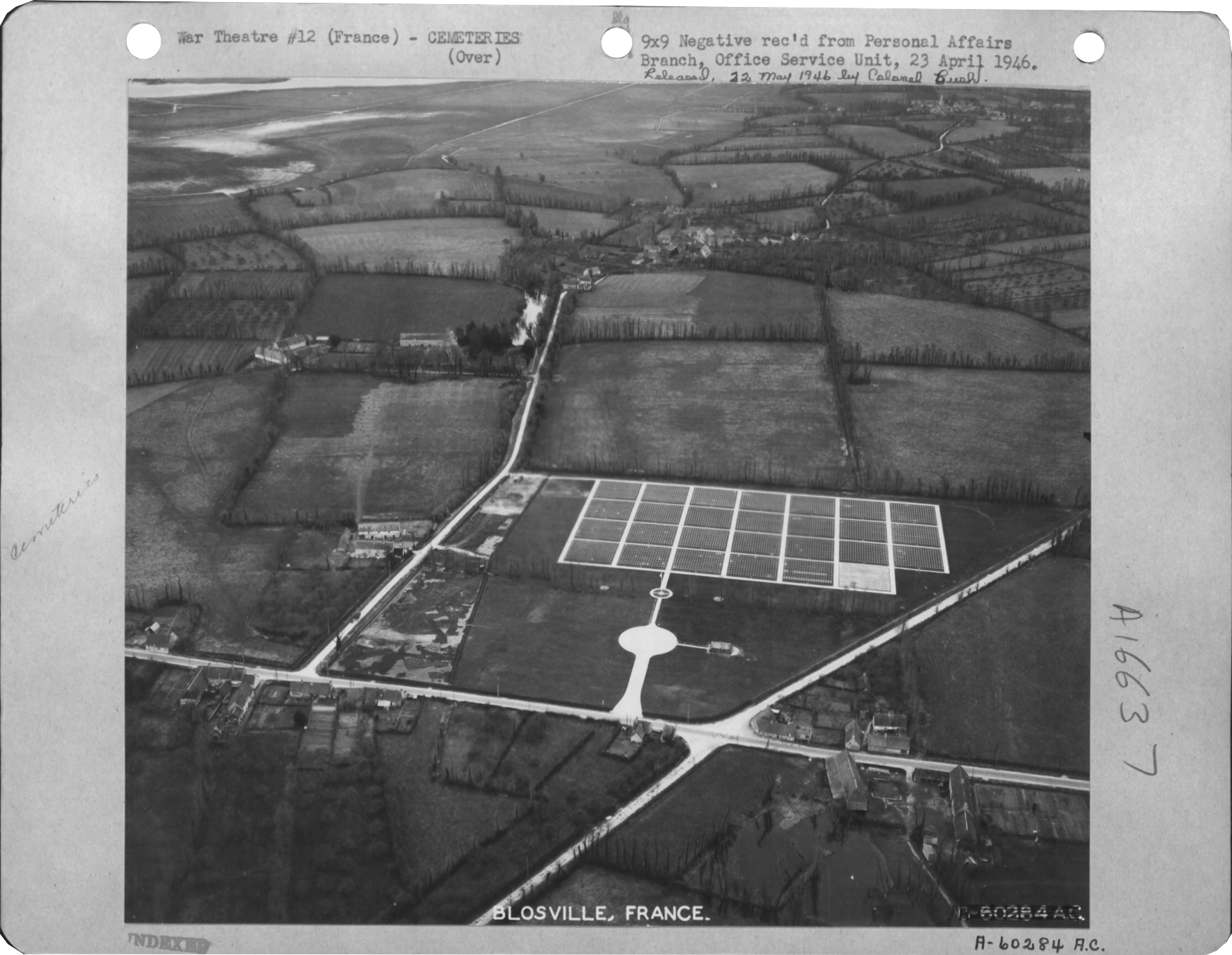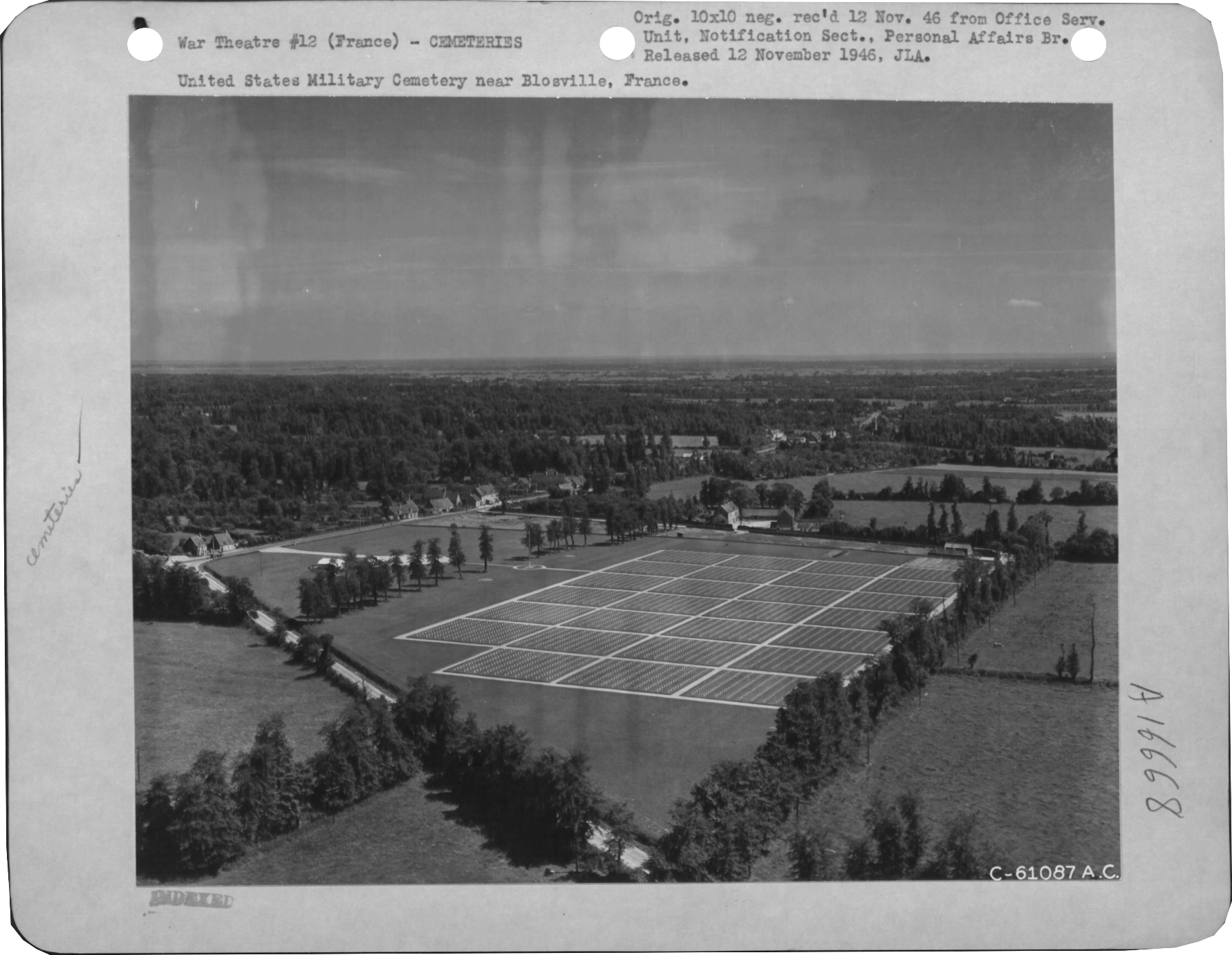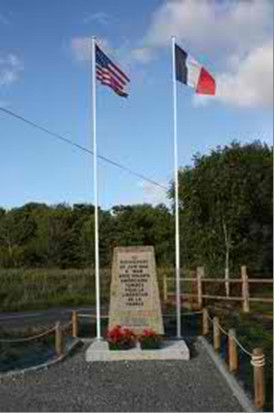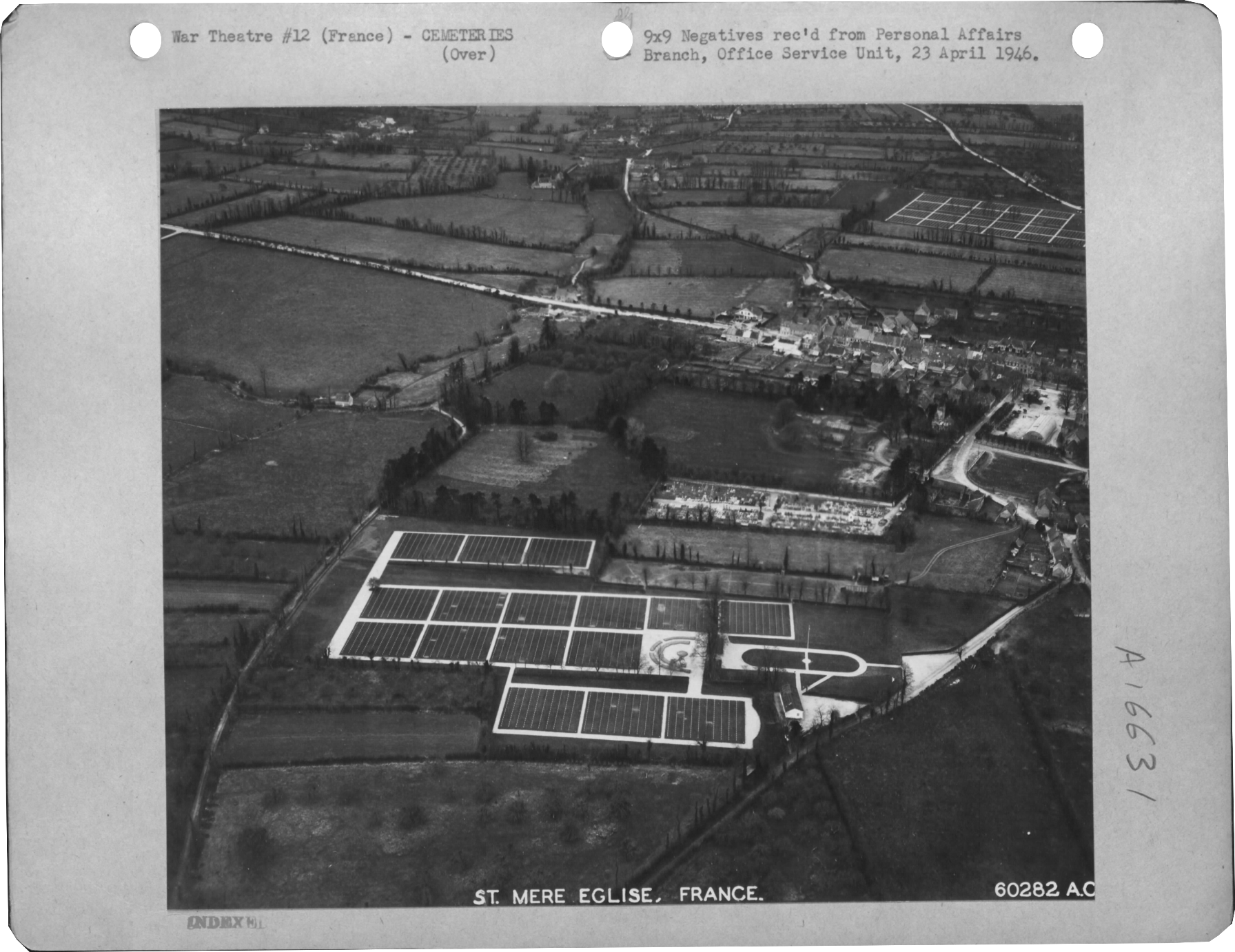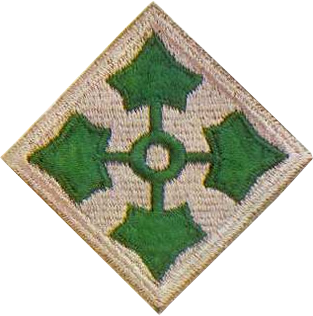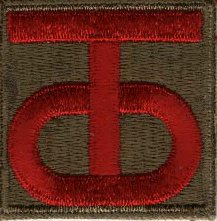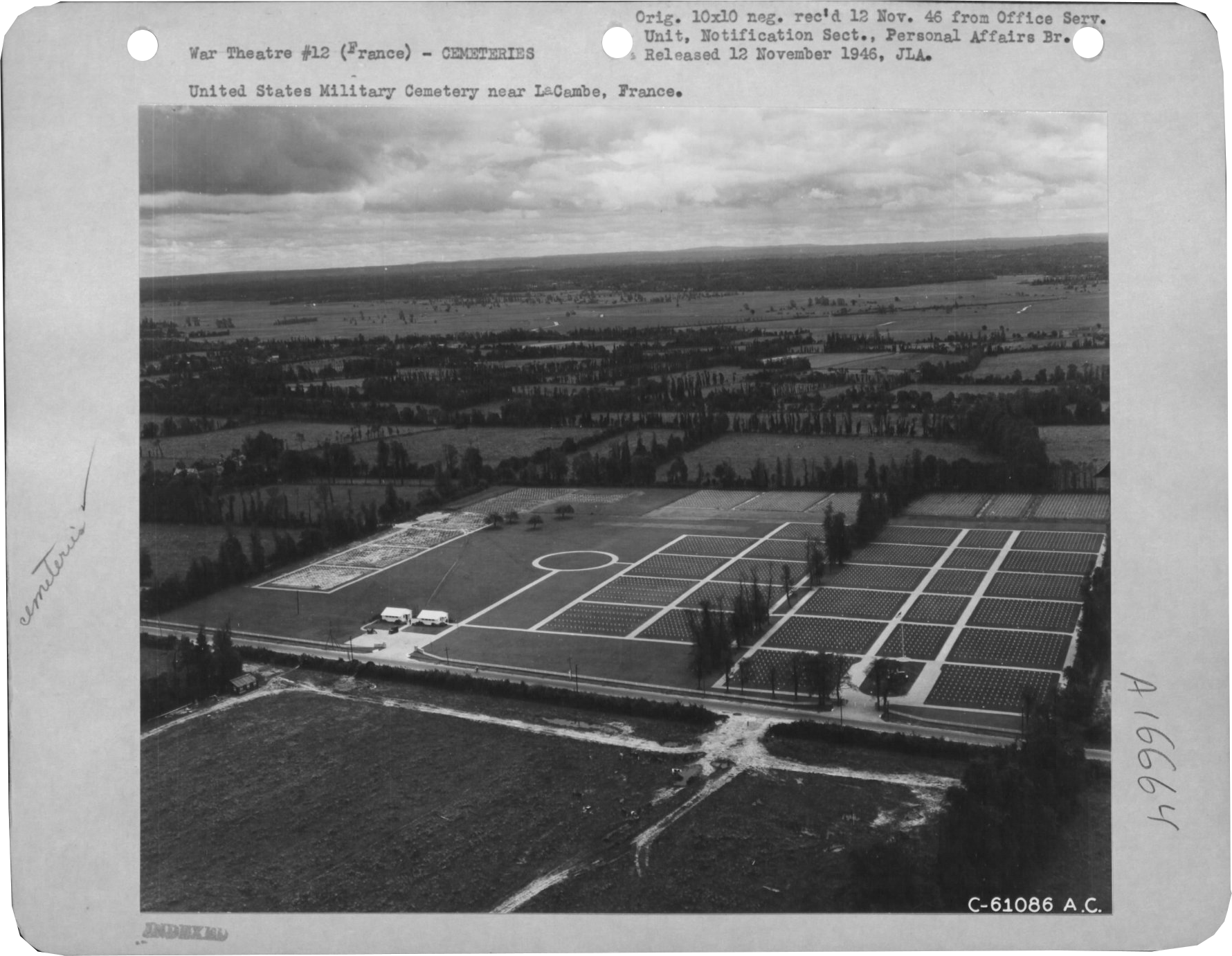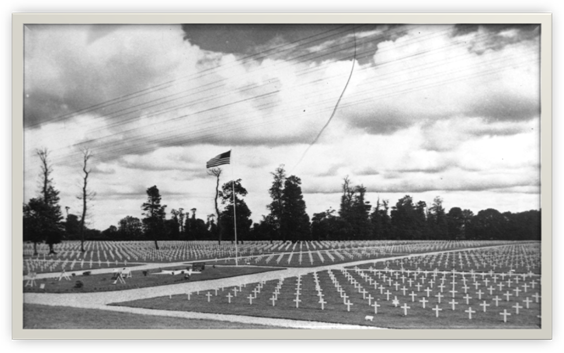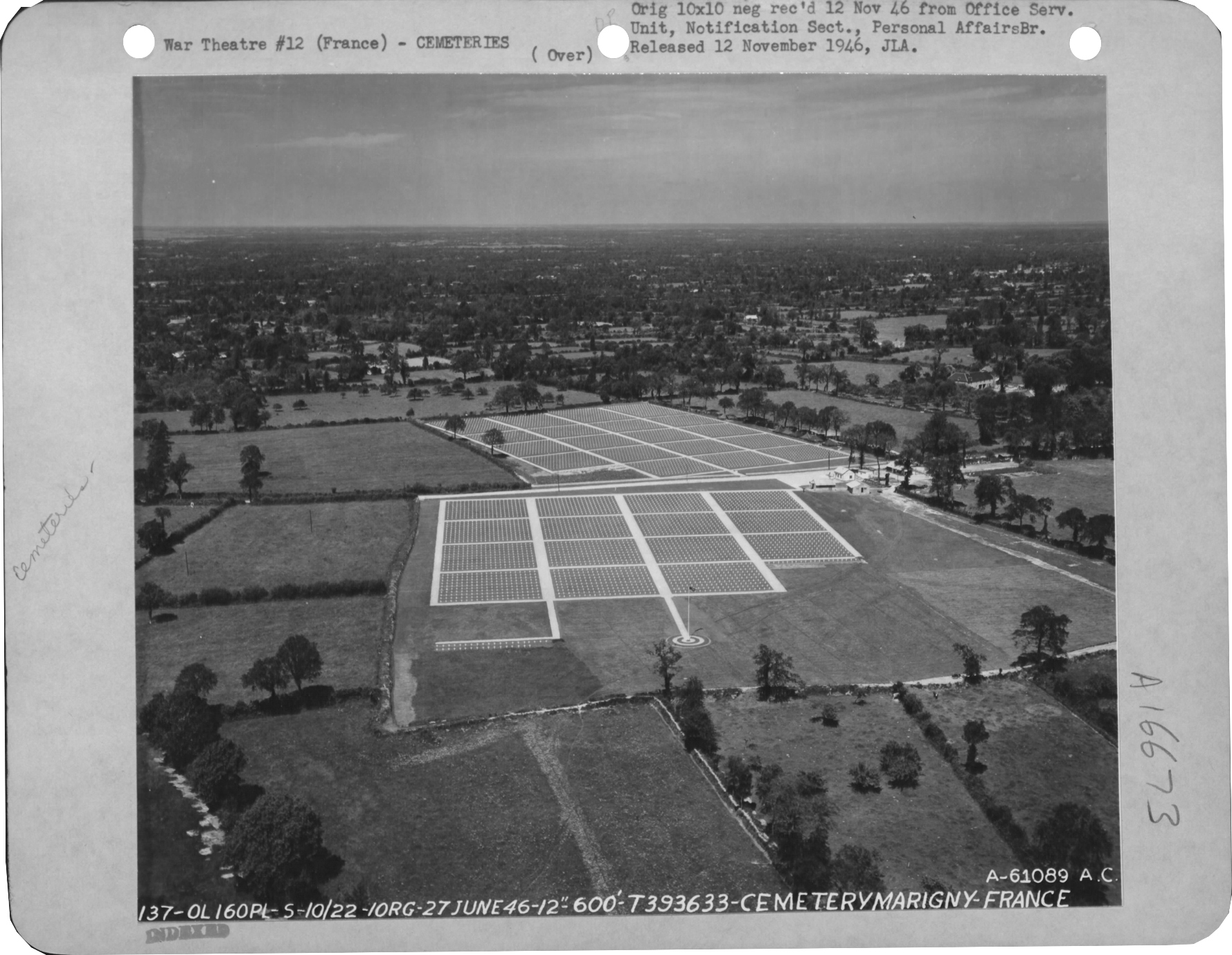TEMPORARY CEMETERY
Temporary cemeteries were located where high casualties were experienced.
Their number was based on the intensity of the combat in each area, the progress of the invasion, and the location of the military hospitals.
The U.S. Army Grave Registration Service’s plan fortemporary cemeteries in Normandy was determined as soon as they learned about the landing locations. Their initial burial plans included the establishment of two cemeteries close to Omaha Beach.
One South/East of Ste. Honorine des Pertes; the other close to Cricqueville en Bessin.
However, the ultimate location and configuration of each were to be determined by the Army Corps of Engineers when they became available.
After landing and the evolution of the front, here is the map of France with the establishment of Temporary American Cemeteries
SERVICE FROM THE GRAVES REGISTRATION
This Command was assigned to the U.S. Army’s Graves Registration Service, created during the First World Warby General Pershing in August 1917 with the task of accounting for all American soldiers who make the ultimate sacrifice. This Command is responsible for the proper burial of all personnel killed while serving under the American Flag whether Army, Air Force, Navy, Marine, Coast Guard, Red Cross, War Correspondents, and International Observers, including Deserters and Prisoners
They also take care of Allied Personnel and Germans found by their teams. Each U.S. Army and its individual Division’s maintained their own Burial& Registration
Command each of which is an integral part of the U.S. Army’s Grave Registration Service. Each Burial & Registration Command is comprised of 5 Officers and 260 Soldiers. A Command features a Headquarters, each consisting of three Platoons.
 |  |
|---|
Because of the excellent team work exhibited by both the U.S. Army’s Grave Registration Service and the Burial & Registration Command, only 3% of the 206 577 American soldiers killed in Europe remain unidentified.
 |  | 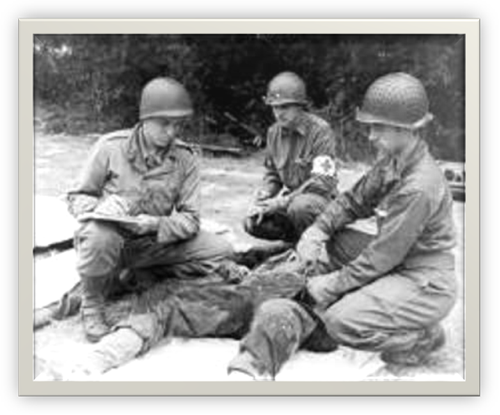 | 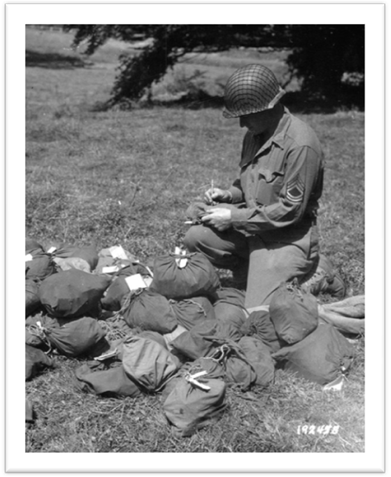 | 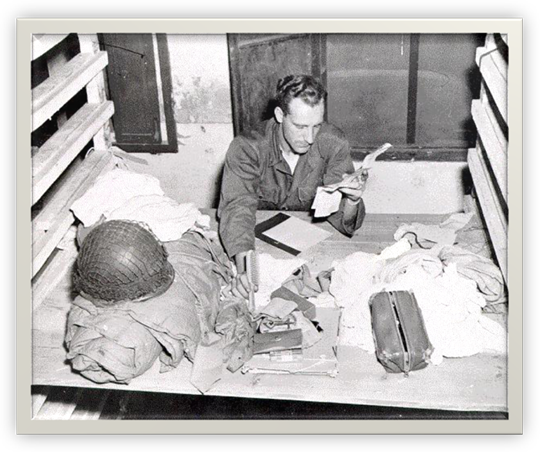 |
|---|---|---|---|---|
|
Equipe d'enregistrement | ||||
LE RUQUET – SAINT-LAURENT N°1
|
The establishment of a permanent US Military Cemetery after June 6th became impossible. However, losses were so great that it became imperative to find a site to construct a temporary one.
| 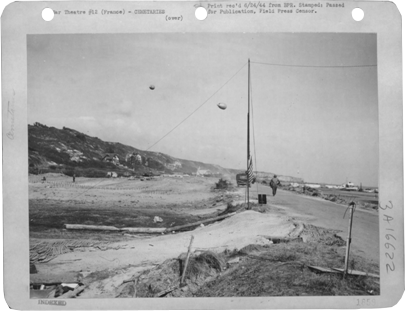 |
|---|---|
|
In the interim, a temporary “Potter’s” field was employed. However, on June 7, 1944 the 3rd Platoon of the 607th Engineering Company, attached to a special Brigade of Engineers, succeeds in constructing a cemetery directly on the beach between Vierville and Saint Laurent on the Normandy landing site called “White Dog”. |
It is the first American cemetery developed by the U.S. Army’s 603rd Burial & Registration Command in France. On the date of its closing on June 10, 1944 457 Americans, a few Germans, English, Sailors, and Royal Air Force aviators will have been interned here. |
|
The Provisional American Cemetery during a Mass Ruquet |
Temporary American cemetery at St Lawrence |
|
Within 10 days, all are moved and reburied. It continues to receive a great number of bodies requiring burial, especially from the U.S. Army’s V Corps for which the cemetery is now named. |
|
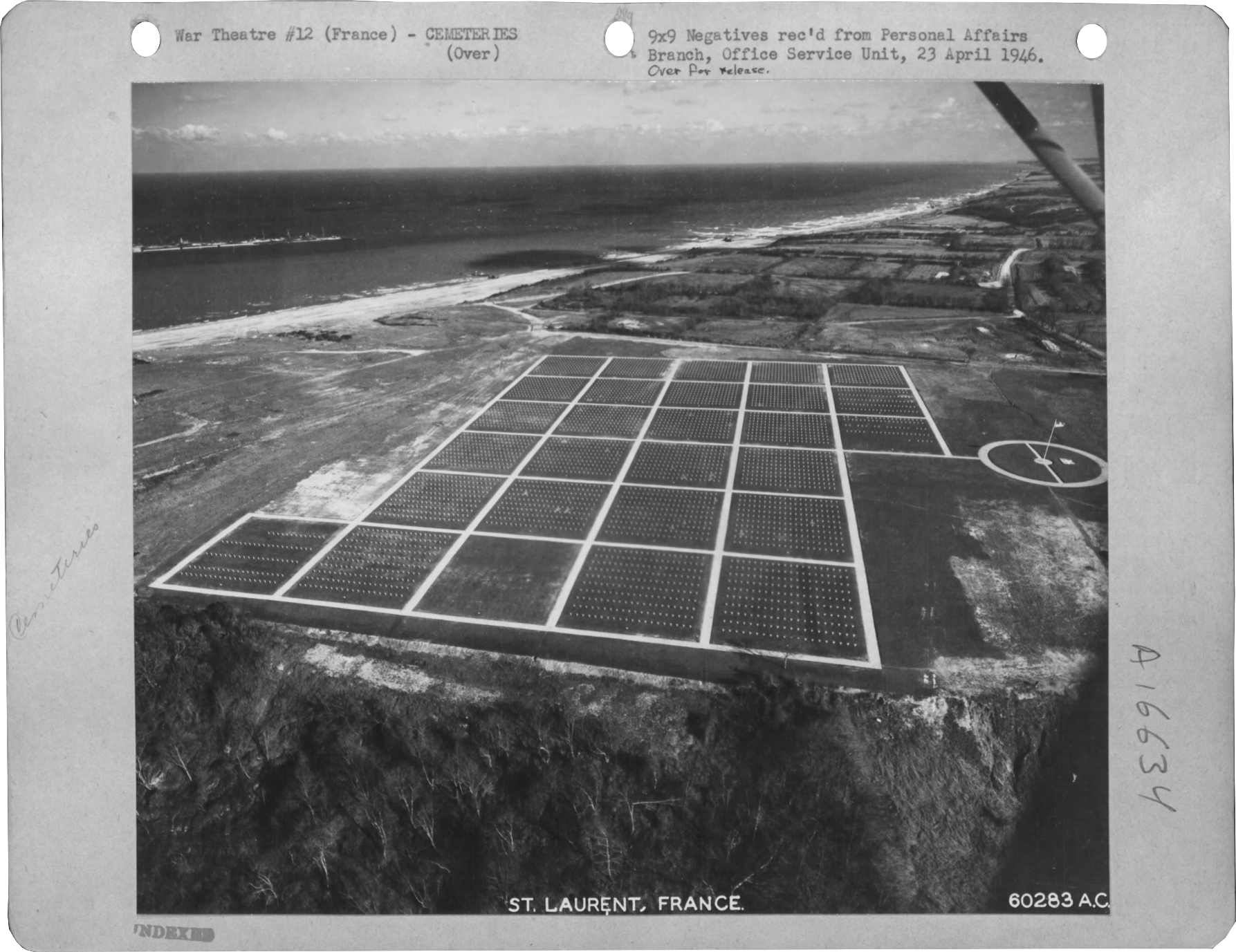 |
By June 26, 1944, at the stroke of midnight, 1 510 Americans are removed from this cemetery and permanently laid to rest at Saint-Laurent sur Mer, along with 48 of their Allies, and 606 Germans, for a total of 2 164 tombs. |
|
American Cemetery "Colleville sur mer" in 1944 | 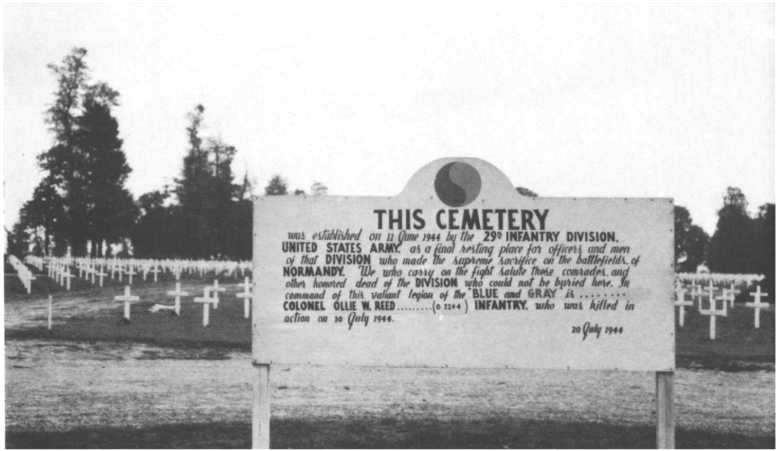 |
|---|---|
|
American Cemetery "Colleville sur mer" in 1952 | |
|
Today, the U.S. Military Cemetery at Colleville-sur-Mer is, in part, built on this temporary cemetery site. | |
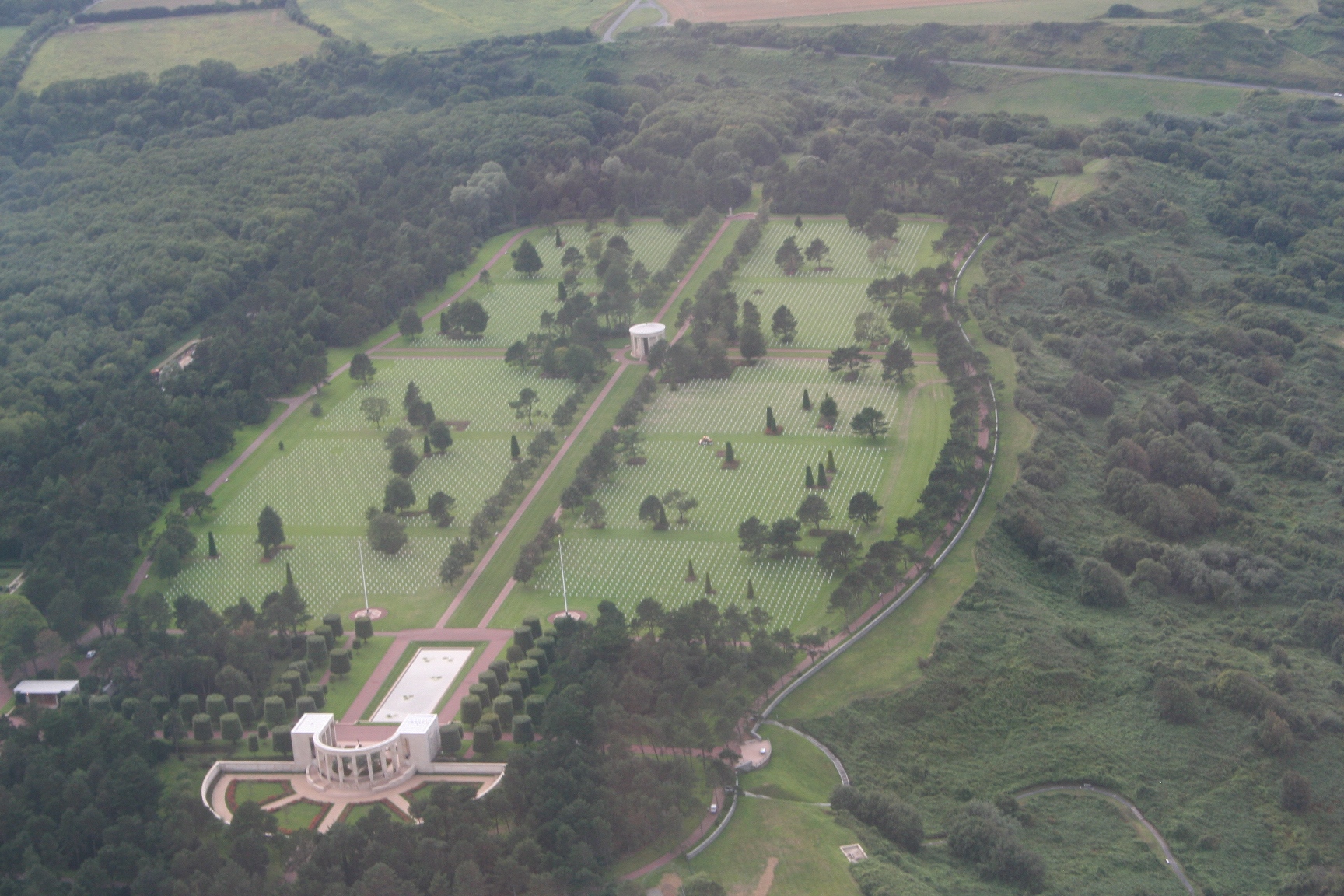 Aerial view of the American Cemetery "Colleville sur mer" | |
BLOSVILLE
The Blosville cemetery was initiated on June 7, 1944 by Elbert E. Legg, a Sergeant with the 603rd Burial & Registration Command.
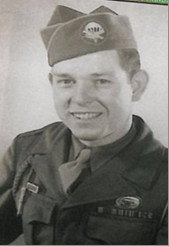 Elbert LEGG Elbert LEGG |
He, alone, is sent to Normandy on June 6, 1944 with the mission to establish a temporary cemetery for the 82nd Airborne Division. The rest of his Unit will join him a few days later, after the Utah Beach landing has been secured. |
|---|
|
His testimony recounts how men from the Registration & Burial Command organized and managed the establishment of temporary military cemeteries in Normandy. When he arrives in Normandy, his first task is to select a site and develop a plan for a cemetery. He selects a field next to the Carrefour Supermarket at Les Forges and starts to receive bodies. He decides to organize the Cemetery in rows of twenty graves based on the limited supplies at his disposal. | 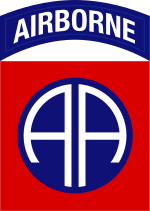 |
|---|
|
Cemetery Temporary from Blosville |
On June 7th after having secured their personal belongings, here 50 Soldiers are laid to rest. By June 9th hundreds of Soldiers require burial: almost half of them are German.
Finally, on June 10th, the first group of the 603rd Burial & Registration Command arrives with both equipment and materials. |
|---|
|
From this date on all cadavers belonging to the 82nd Airborne Division are sent directly to this cemetery.
Today, a monument in Les Forges indicates the site of the Blosville cemetery where over 5 700 Americans were initially buried. |
Cemetery Temporary from Blosville |
|---|---|
|
Stele to the site of the temporaryCemetery Blosville | |
SAINTE MERE EGLISE
|
Sainte Mère Eglise N°1 | The cemetery at Vierville sur Mer was the first in Normandy. Soon after, on June 8, 1944, another was established on Utah beach, close to the Hospital de la Madeleine, to bury the dead from the U.S. Army’s 4th Infantry Division. Around 190 bodies will be buried there before being transferred in a larger, temporary cemetery: at Sainte-Mère-Eglise N° 1. |
|---|
|
4th Infantry Division |
|---|
|
On June 9, 1944, other platoons of the 603d Burial & Registration Command arrive on the Utah Beach coast with the mission to arrange for temporary cemeteries in Europe.
|
90th Infantry Division |
|---|
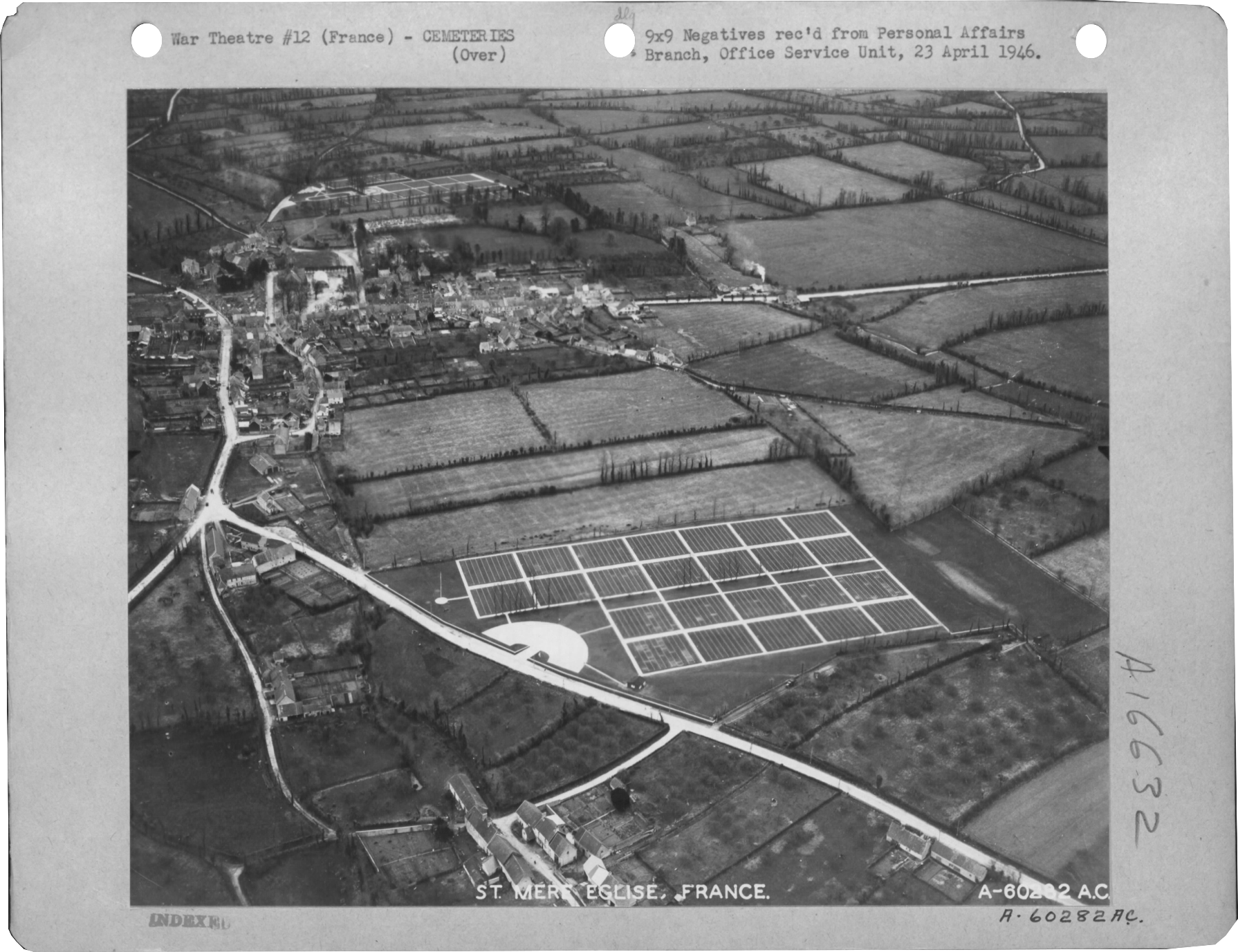 |
This cemetery will soon become too inadequate: 2 172 American soldiers and 13 allies were buried there in just a few weeks. The great loss of Airborne troops forces the Command to build a second cemetery on June 25thsouth of Sainte Mere Eglise.
|
|---|
|
Monument remembering the location of the temporary Cemetery Ste Mère Eglise N° 2 | 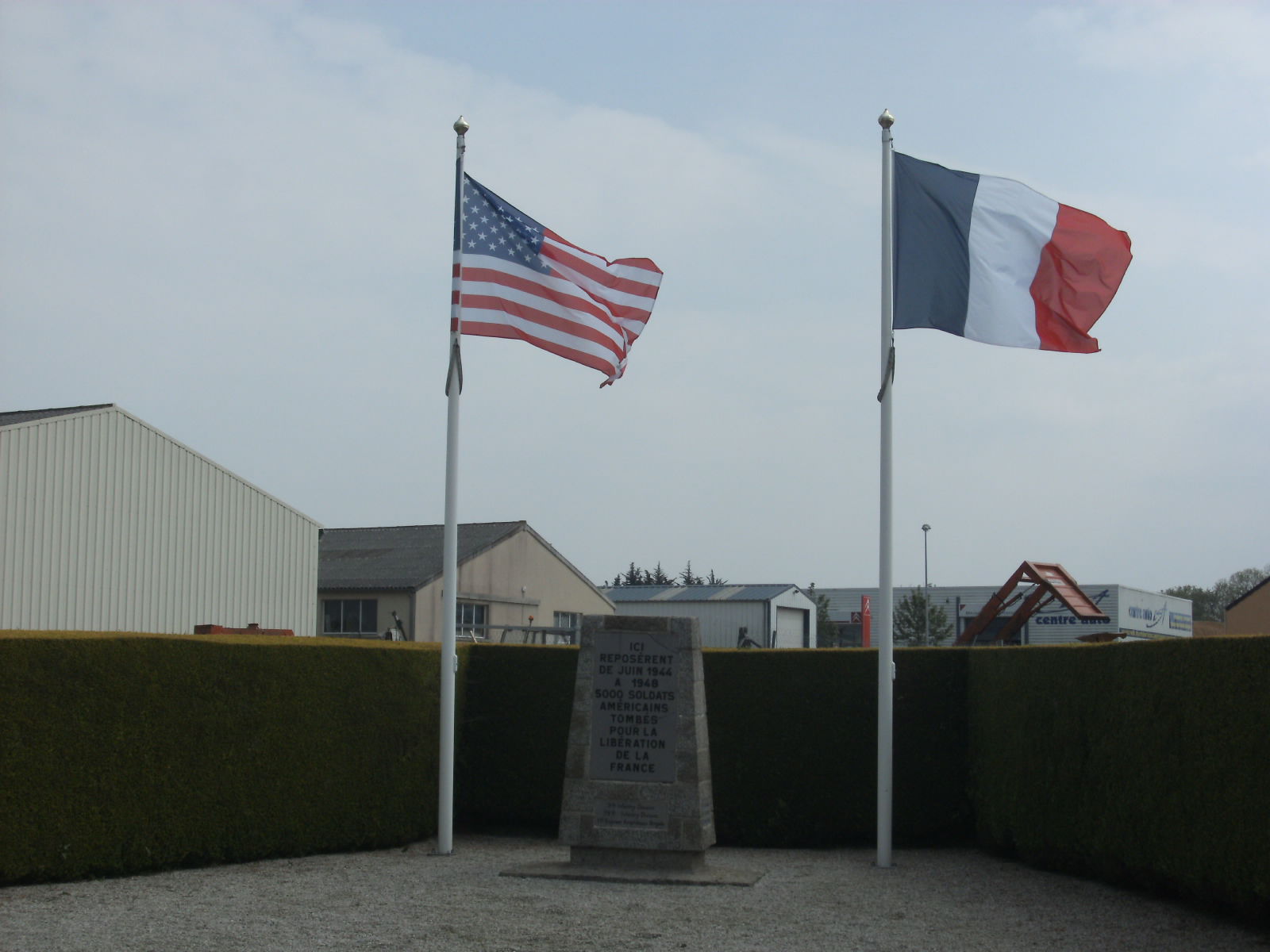 |
|---|
LA CAMBE
|
Cemetery temporary "La Cambe" before 1948 |
On June 11, 1944 the landed troops on Omaha Beach finally succeeded to break through the enemy lines and were on the march to the heart of Normandy. During this offensive, American Army loses were substantial and the U.S. Army’s Grave Registration Service was obliged to set up a temporary cemetery around the village of La Cambe. |
|---|---|
|
A total of 4,543 American soldiers from the First Army Division will be buried in the Cemetery of La Cambe. A majority of them belong to the 29th Infantry Division; this is why the cemetery will be named after this unit. |
|
|
Cemetery temporary "La Cambe" before 1948 | |
|
Map cemetery of La Cambe with American side (4534 soldiers buried) and German side (8574 soldiers buried) After the exhumation of American corpses in 1948, the area will be designated as a permanent Cemetery for German War Dead. | 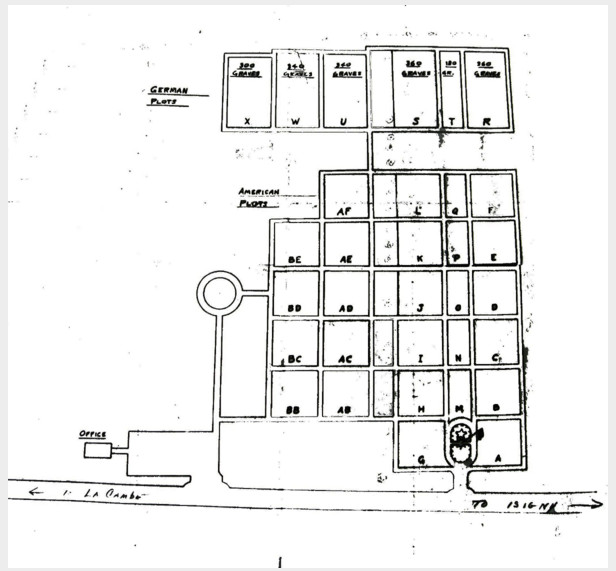 |
|---|
SAINT-JAMES
In just over a week, three new temporary American cemeteries were built in Normandy:
Marigny |
Saint James |
|---|---|
|
July 31, 1944 with 3 070 body
|
On August 5th with 4 367 body  |
Le Chêne-Guérin | |
|
August 7 containing the bodies of 1 202 soldiers.  |
A second cemetery at Chêne-Guerin is installed in 1 628 to bury bodies of German soldiers. 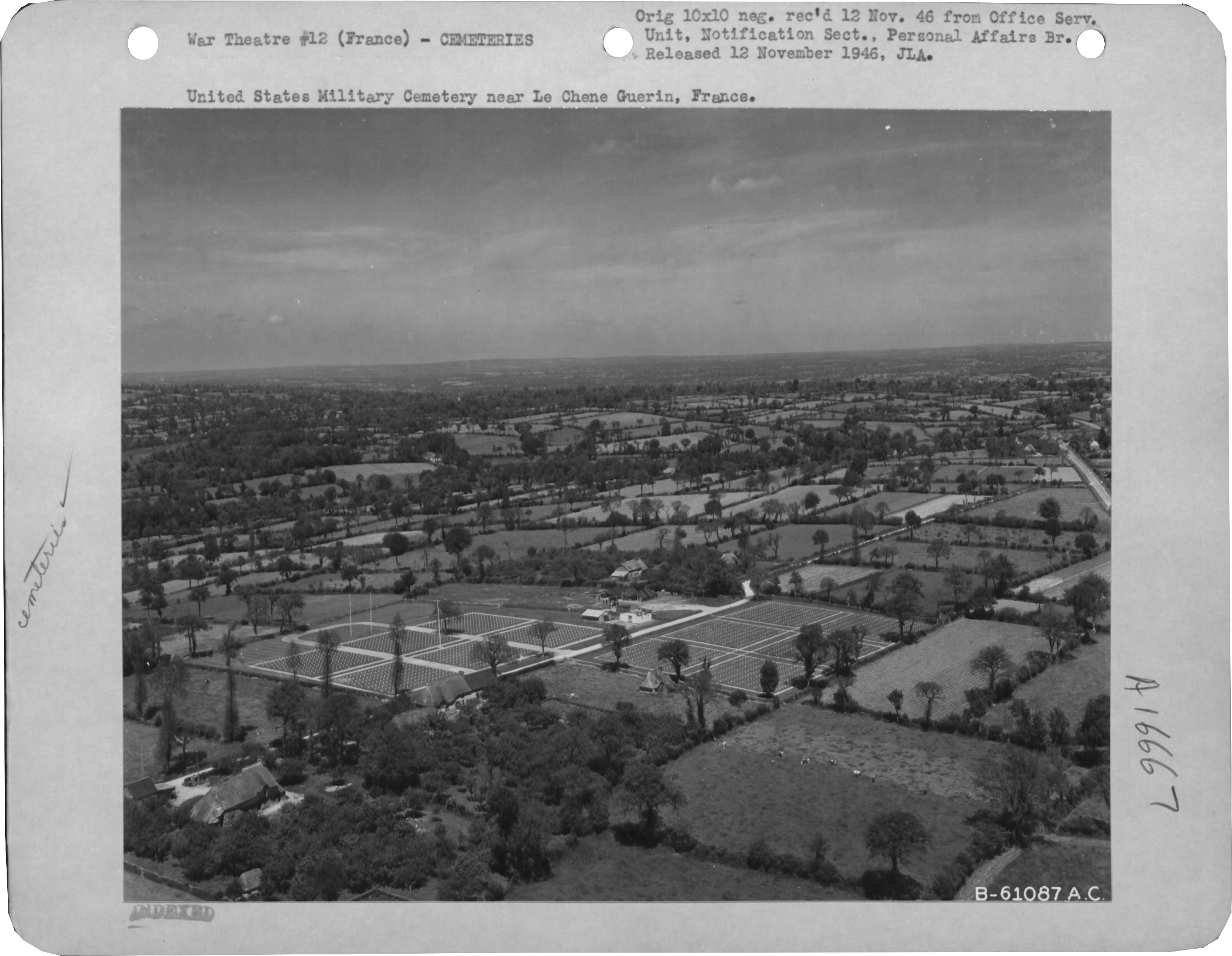 |
|
The future permanent cemetery of St James is established less than a week after the release of Avranches by the 610th Company of the registration of burials Subsequently, he was entrusted to the company's 3 042 Graves Registration, attached to Patton's Third Army and supported by the 611th Company: 4 367 American soldiers, 45 British, 38 French, three Canadians, one Australian, one New Zealander, who for the most part, lost their lives during the liberation of St. Lo and the country of the Cotentin and Brittany during operations to control the east bank of the Seine. With the advance of military operations, Americans continue to gradually establish new cemeteries: | |
Gorron |
Saint Corneille |
|---|---|
|
Gorron 752 body August 15, 1944 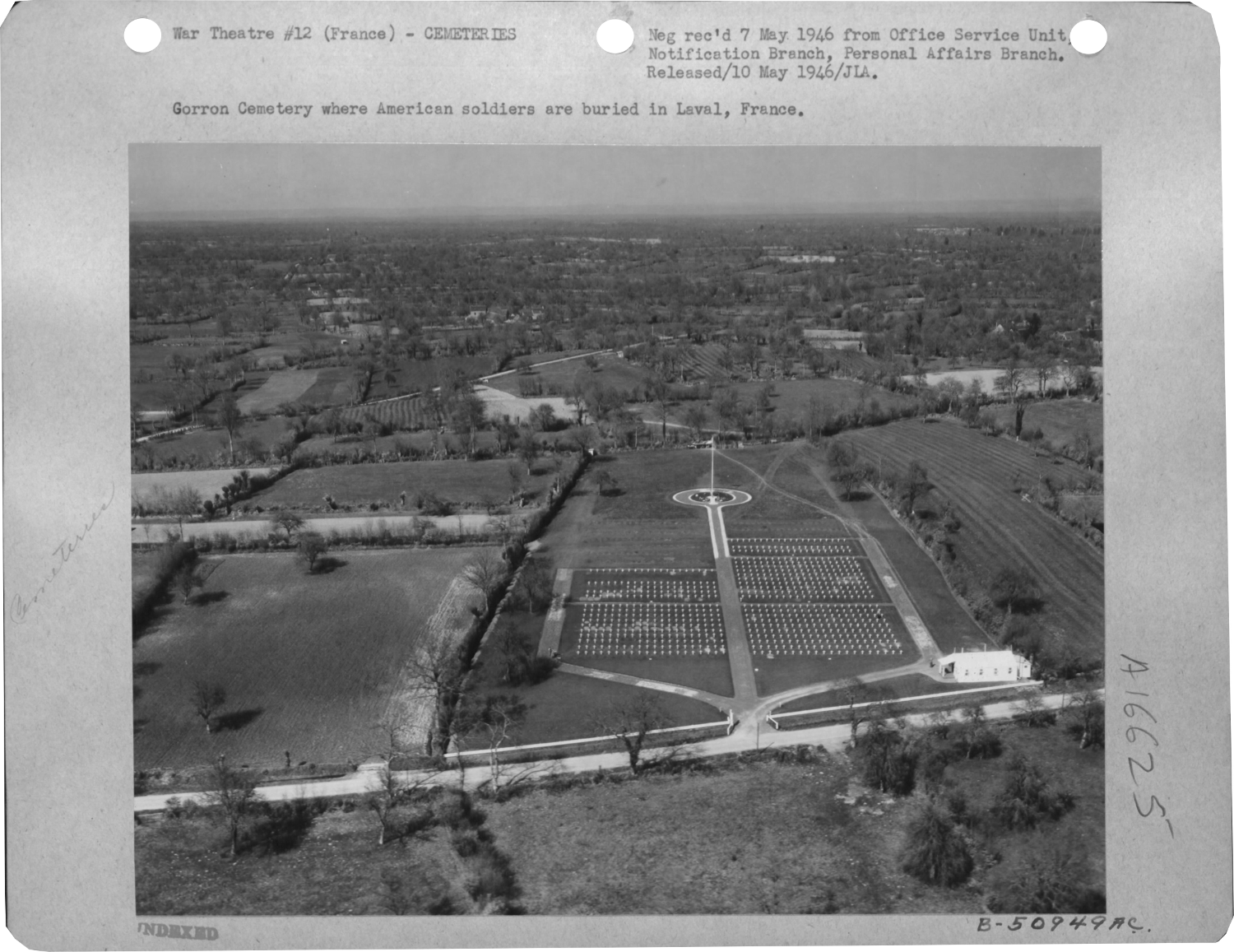 |
The cemetery was officially established August 16, 1944 by the 3rd U.S. Army of General Patton. 521 U.S. soldiers were buried there. Several English airmen, New Zealanders, Australians and Canadians will be buried there with some French Resistance fighters, killed while approaching Paris and Troyes.Fifteen men of the 2nd Armored Division will also be temporarily buried there.  |
Saint André de l’Eure |
Villeneuve sur Auvers |
|
The temporary cemetery of St André de l’Eure was established August 24, 1944 by the 1st U.S. Army. It was situated between Evreux and Dreux. 2 066 Americans who gave their lives through France, on their way to liberate Paris were buried there. 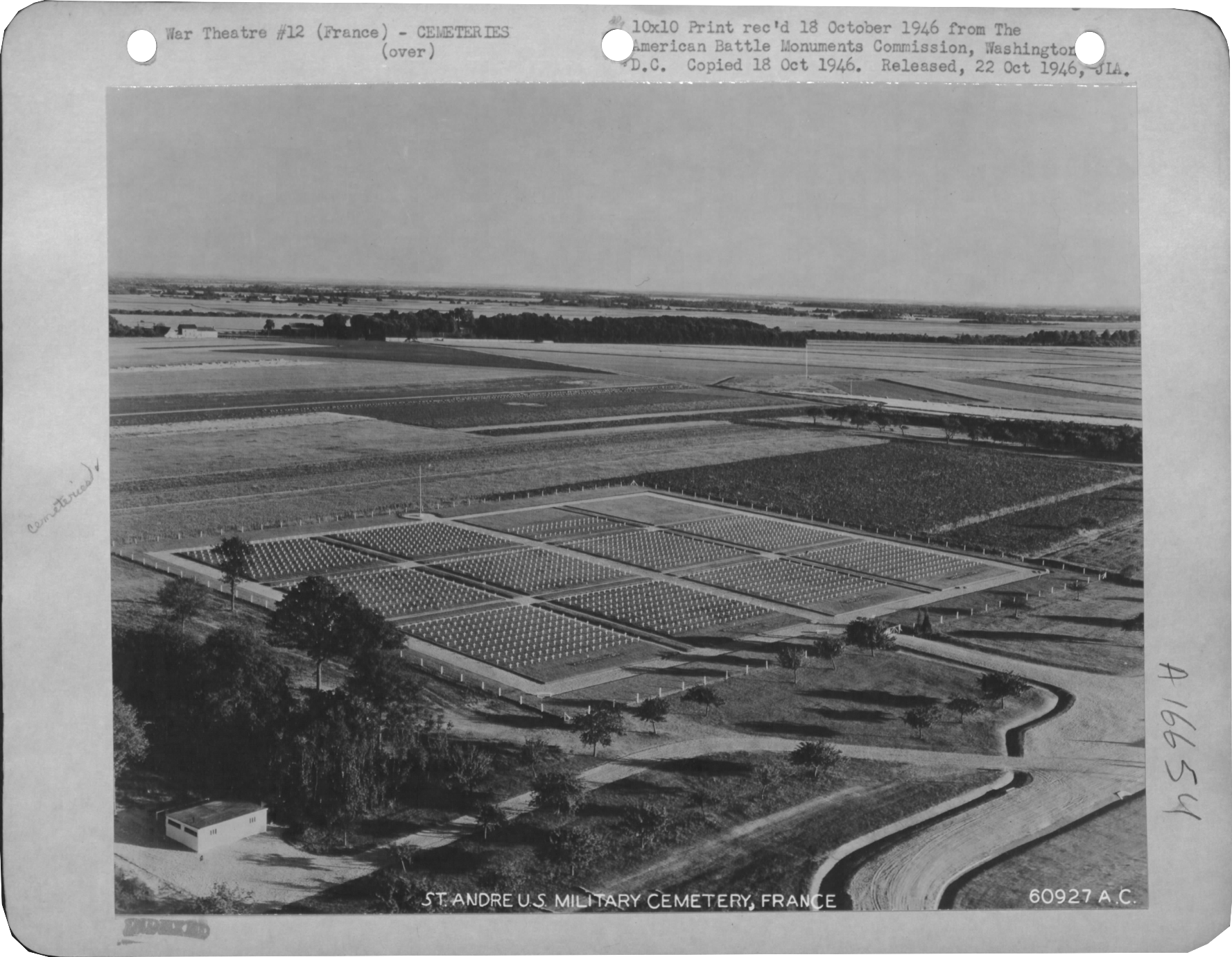 |
303 corps le 25 aout 1944 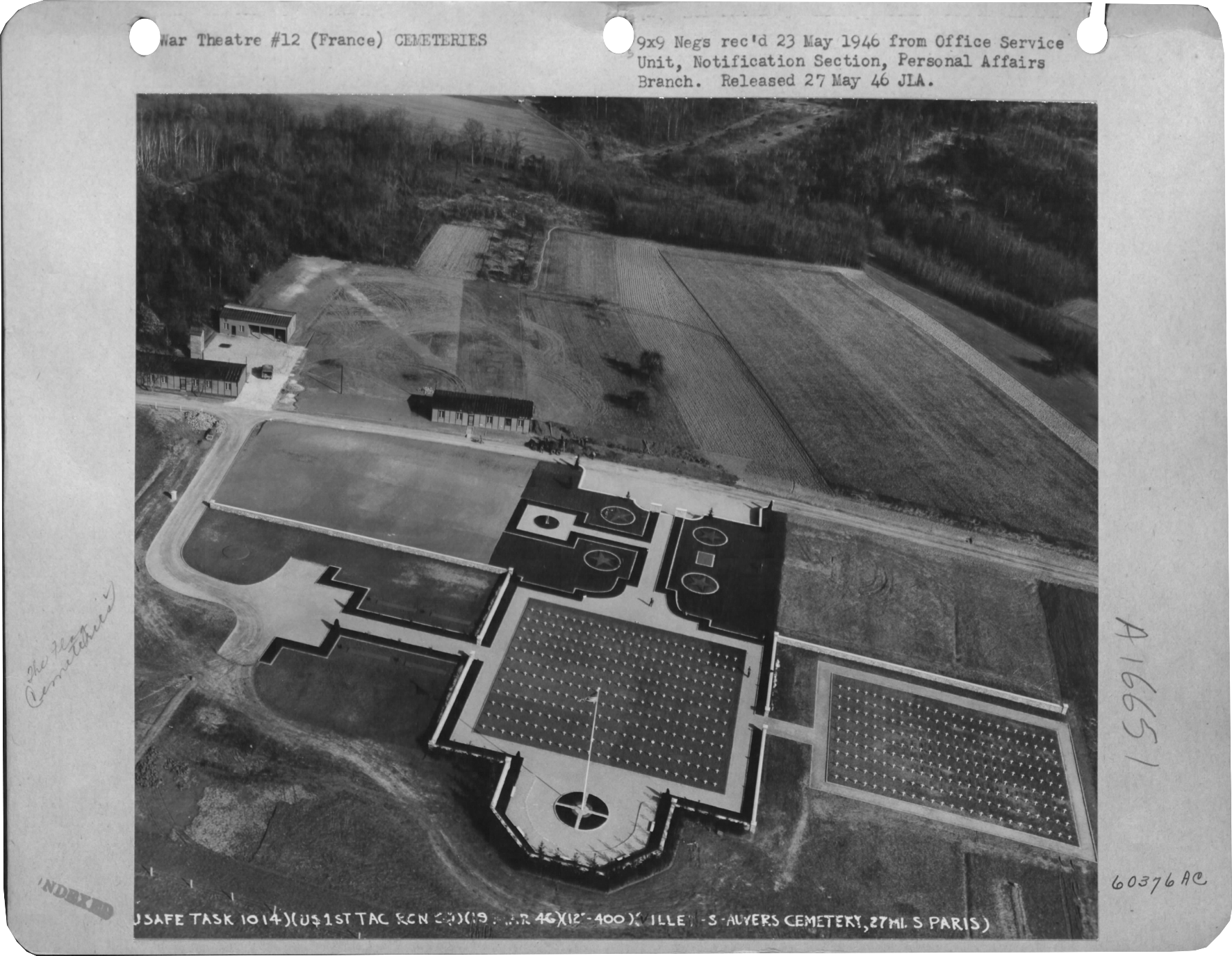 |
ORGLANDES | |
|---|---|
|
Around June 20, 1944, the Platoon 603rd company registration of burials of the 1st US Army heads Orglandes to establish a new cemetery. Originally designated for American troops, it will also eventually include German soldiers: 6,074 Germans soldiers will be buried here in accordance with the same ceremonies afforded to American soldiers. Today, the Orglandes Cemetery now includes the tombs of 10 152 German Soldiers. Standing in the cemetery of Orglandes, there are now 10 152 German soldiers buried. | 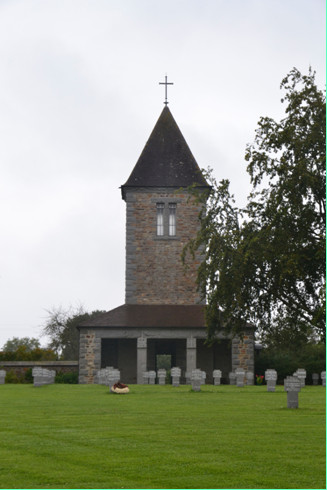 |
Last burial in the Normandy Cemetery.
CHRONOLOGY OF THE TEMPORARY CEMETERIES | |
|---|---|
| Creation of the ABMC (American Battle Monuments Commission) | |
| Treaty signed with France regarding the granting in perpetuity of sites used as cemeteries on French soil. | |
| The United States of America enter the war. | |
| Allied land in Normandy | |
| Opening of the first temporary cemeteries at Omaha Beach and Blosville. | |
| Opening of a temporary cemetery at Utah Beach. | |
| Opening of Sainte Mère Église n°1 cemetery. | |
| opening of a new temporary cemetery near the present cemetery at Colleville sur Mer, temporary closure of Omaha Beach cemetery. Opening of a temporary cemetery at La Cambe. | |
| Opening of the temporary cemetery of Orglandes, originally for American soldiers and eventually for German soldiers. | |
| Opening of the temporary cemetery n°2 at Sainte Mère Eglise. | |
| Opening of Blosville temporary cemetery. | |
| Opening of Marigny temporary cemetery. | |
| Opening of St James temporary cemetery. | |
| Opening of Chêne Guérin temporary cemetery. | |
| Opening of Gorron temporary cemetery. | |
| Opening of Saint Corneille temporary cemetery. | |
| Opening of Saint André de l’Eure temporary cemetery. | |
| Opening of Villeneuve sur Auvers temporary cemetery. | |
| 76 360 Americans are buried in the twenty-four temporary cemeteries in France. | |
| First official ceremony of Remembrance Day after World War II (Mémorial Day). | |
| The Office of the Quartermaster General identifies a total of 359 temporary cemeteries U.S.. | |
| The temporary cemetery of Saint Laurent sur Mer is included in the inventory of the Historic Sites of Calvados, as well as the seaside area. | |
| The first letters for a possible repatriation are sent to families. | |
| Conference in Washington: agreement for eight cemeteries abroad including at Colleville sur Mer | |
| The Secretary of War officially confirms the choice of fourteen new cemeteries but a few potential sites are preserved. | |
| Start of the repatriation program in Europe. | |
| Ceremony at the temporary cemetery of St. Laurent sur Mer which becomes the second closed cemetery in Europe. | |
| The first bodies buried in the cemetery of St. Laurent sur Mer are exhumed to be repatriated. | |
| Officials in Washington confirm that there will only be two cemeteries in Normandy: Colleville sur Mer and St James. | |
| A great ceremony is held in Central Park in honor of the first body brought back to the United States. | |
| Start of exhumation in La Cambe American cemetery. | |
| Franco-American agreement about permanent cemeteries. | |
| End of the exhumations in St Laurent sur Mer cemetery. | |
| The “Robert F Burns” ship leaves Cherbourg with the first load of coffins. | |
| Exhumation operations start at Blosville. | |
| The first repatriation ship leaves Anvers. | |
| The “Joseph V. Connolly” ship sinks in the middle of the Atlantic with a cargo of thousands of empty coffins. | |
| Exhumation in the N2 cemetery of St. Mere Eglise and at St. James. | |
| 34 874 bodies have been repatriated to the United States. | |
| First final burial in the permanent cemetery at Colleville / Mer | |
| After a ceremony, the ABMC takes responsibility of Colleville / Mer cemetery | |
| “The Memorial” in the Normandy cemetery is finished. | |
| The family of Quentin Roosevelt asked for his body to be transferred to Colleville / Mer cemetery. | |
| Inauguration of the Normandy American Cemetery. | |
| Inauguration of the Brittany Cemetery. | |
| Remembrance Day (Memorial Day) celebrated the last Monday of May is declared a day of national holiday. | |
| Last funeral dated at the cemetery of Normandy. | |
This page was created thanks to the support of Constant Lebastard(Guide to ABMC) and author
CEMETERY WORK on the COLLEVILLE sur MERBy Constant LEBASTARD |
|---|
|
Ouvrage sur le Cimetière Américain de Colleville sur mer 
( Click the photo for more piece of information) |
| INFORMATION SOURCES & PHOTOS | ABMC - Constant LEBASTARD - Nara - Collection GRP Picardie - Yves de la Rüe - Volskbund Archiv |
|---|





















